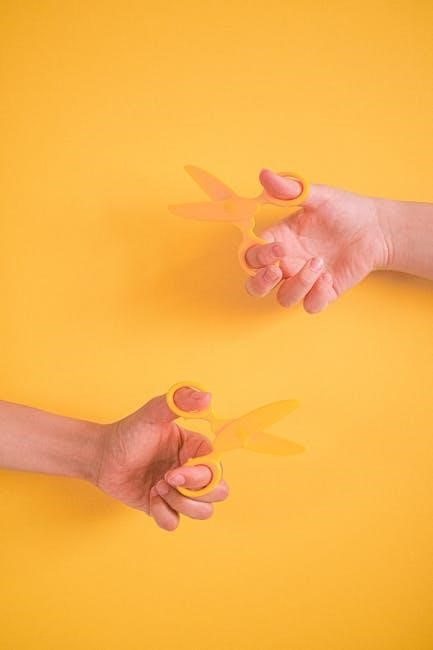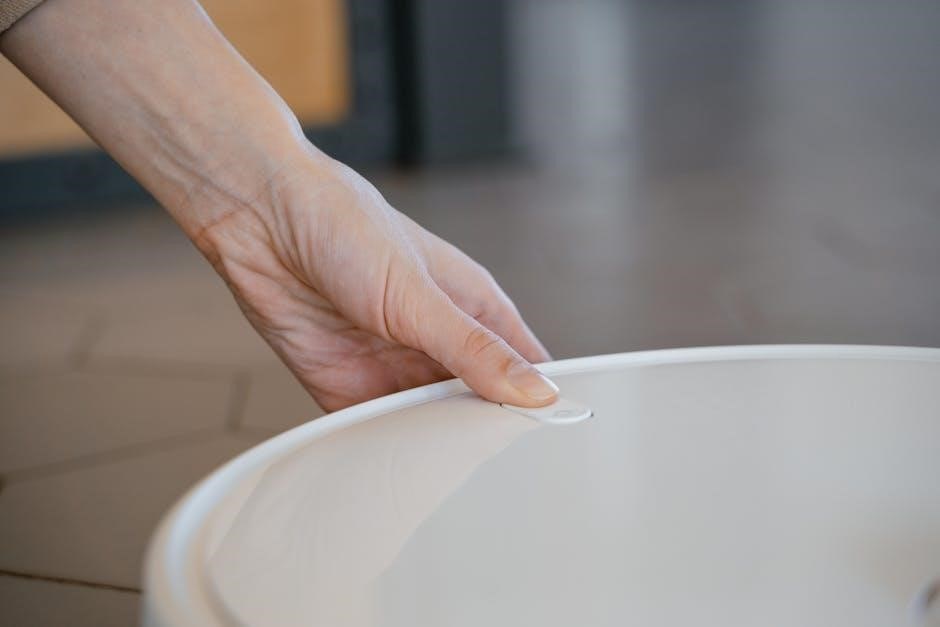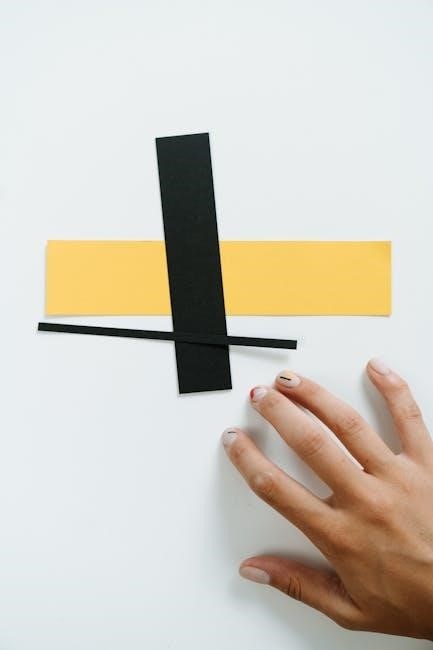singer simple manual 2263
Singer Simple 2263 Sewing Machine: Article Plan
This article provides a detailed guide to the Singer Simple 2263 sewing machine. It covers everything from threading and bobbin winding to stitch selection and troubleshooting. Accessing and utilizing the instruction manual is also discussed, ensuring a seamless sewing experience.
The Singer Simple 2263 sewing machine is a popular choice for beginners and experienced sewers alike, known for its user-friendly design and versatile features. This mechanical sewing machine offers a range of basic stitches, making it suitable for various sewing projects, from simple alterations to more complex creations.
This article aims to provide a comprehensive guide to understanding and utilizing the Singer Simple 2263 effectively. We will delve into its key features, step-by-step instructions, and helpful tips to ensure a smooth and enjoyable sewing experience. Whether you’re a novice just starting your sewing journey or a seasoned pro looking for a reliable machine, this guide will offer valuable insights.
One of the most crucial aspects of using any sewing machine is understanding its manual. The Singer Simple 2263’s instruction manual is a treasure trove of information, providing detailed guidance on everything from threading the machine to troubleshooting common issues. We’ll explore how to access and make the most of this valuable resource.
By the end of this article, you’ll have a solid understanding of the Singer Simple 2263 and be well-equipped to tackle a wide range of sewing projects with confidence.
Key Features and Benefits
The Singer Simple 2263 boasts several key features that make it a desirable sewing machine for users of all skill levels. One of its primary benefits is its ease of use. The machine is designed with simplicity in mind, making it straightforward to set up and operate, even for beginners. This is particularly evident in its threading system and stitch selection process.
This model offers a selection of built-in stitches, including essential stitches like straight stitch, zigzag stitch, and buttonhole stitch. These stitches cater to a variety of sewing needs, from basic repairs and alterations to more creative projects. The ability to adjust stitch length and width further enhances its versatility, allowing users to customize their stitches to achieve the desired look and feel.
Durability is another significant advantage of the Singer Simple 2263. Built with quality components, it is designed to withstand regular use and provide long-lasting performance. Its sturdy construction ensures stability during sewing, minimizing vibrations and ensuring accurate stitch formation.

Furthermore, the machine’s compact size makes it easy to store and transport, making it ideal for those with limited space or who need a portable sewing solution. These features combine to make the Singer Simple 2263 a reliable and practical choice for any sewing enthusiast.

Threading the Singer Simple 2263
Threading the Singer Simple 2263 is a fundamental step in preparing the machine for sewing. The process is designed to be user-friendly, but following the correct steps is crucial to avoid issues such as thread breakage or skipped stitches.
Begin by placing the spool of thread on the spool pin, ensuring it is securely in place. Next, guide the thread through the thread guide located on the top of the machine. From there, follow the indicated path, usually marked with arrows or numbers, down towards the tension disc. Make sure the thread is properly seated between the tension discs, as this controls the thread tension during sewing.
Continue guiding the thread down to the lower thread guide and then up towards the take-up lever. Pass the thread through the take-up lever from right to left, ensuring it is securely in place. This lever plays a critical role in delivering the thread smoothly during the sewing process.
Finally, thread the needle from front to back. Some users find it helpful to use a needle threader, especially for finer threads or if they have difficulty seeing the eye of the needle. Once the needle is threaded, draw the thread through, leaving a tail of a few inches. With these steps completed, the Singer Simple 2263 is now properly threaded and ready to begin sewing.
Winding the Bobbin
Winding the bobbin is an essential preliminary task before starting any sewing project with the Singer Simple 2263. A properly wound bobbin ensures consistent thread delivery and prevents sewing issues.
To begin, place the spool of thread on the spool pin, just as you would for threading the machine. Next, guide the thread through the bobbin winding tension disc, which is usually a small, circular guide located near the bobbin winder. This disc helps to maintain even tension as the thread is wound onto the bobbin.
Insert the empty bobbin onto the bobbin winder spindle. Ensure the bobbin is securely in place. Wind the thread around the bobbin several times by hand to secure it. Then, push the bobbin winder spindle to the right, engaging the bobbin winding mechanism.
With the bobbin winder engaged, gently press the foot pedal to start winding the bobbin. The machine will automatically stop when the bobbin is full. If it doesn’t stop automatically, disengage the bobbin winder manually once the bobbin is filled to an appropriate level.
Carefully remove the bobbin from the bobbin winder spindle and trim any excess thread. Insert the wound bobbin into the bobbin case, following the instructions in your Singer Simple 2263 manual for the correct orientation and threading path. The machine is now ready for sewing.
Understanding Thread Tension
Thread tension is a critical aspect of achieving quality stitches with your Singer Simple 2263 sewing machine. Proper tension ensures that the top and bobbin threads interlock correctly within the fabric, creating a balanced and secure seam.
The thread tension dial, usually located on the front of the machine, controls the tightness of the top thread. An incorrect tension setting can lead to several problems. If the top thread tension is too tight, the bobbin thread will be pulled to the top of the fabric, creating loops or puckering.
Conversely, if the top thread tension is too loose, the top thread will appear loopy on the underside of the fabric. The ideal tension is when the top and bobbin threads meet and interlock evenly within the layers of fabric.
To adjust the thread tension, start with the recommended setting in your Singer Simple 2263 manual, typically around the middle of the dial’s range. Test the tension on a scrap piece of the fabric you’ll be using for your project. Observe the stitches closely.
Make small adjustments to the tension dial, one increment at a time, and test again until the stitches appear balanced. Remember to re-thread the machine after each adjustment for accurate results. Consistent thread tension is key to professional-looking sewing projects.
Changing the Needle
Regular needle changes are essential for maintaining optimal sewing performance on your Singer Simple 2263. A dull or damaged needle can cause skipped stitches, broken threads, and even damage to your fabric. It’s recommended to change the needle approximately every other garment or at the first sign of any sewing issues.
Before you begin, turn off and unplug your sewing machine for safety. Raise the needle to its highest position and locate the needle clamp screw. This screw holds the needle in place and is usually located just above the needle itself. Use the screwdriver that came with your machine to loosen the needle clamp screw.

Once the screw is loose, gently pull the old needle down and away from the machine. Dispose of the old needle safely. Now, insert the new needle, ensuring that the flat side of the needle shank is facing towards the back of the machine. Push the needle up as far as it will go into the needle clamp.
Hold the needle in place and tighten the needle clamp screw securely. Make sure the needle is properly aligned and doesn’t wobble. A properly installed needle is crucial for creating consistent and accurate stitches.
After changing the needle, test the machine on a scrap piece of fabric to ensure everything is working correctly before starting your project. Always use genuine Singer needles for best results.
Selecting Stitch Patterns
The Singer Simple 2263 sewing machine offers a variety of stitch patterns to accommodate diverse sewing needs, from basic garment construction to decorative embellishments. Understanding how to select and utilize these stitch patterns is key to maximizing the machine’s capabilities and achieving desired sewing results.
Consult your Singer Simple 2263 instruction manual to familiarize yourself with the available stitch options. The manual provides a visual guide to each stitch pattern and its corresponding number or symbol on the stitch selector dial. Common stitch patterns include straight stitch, zigzag stitch, buttonhole stitch, and various decorative stitches.
To select a stitch pattern, locate the stitch selector dial on your machine. Rotate the dial until the desired stitch pattern number or symbol aligns with the indicator mark. Ensure the dial clicks firmly into place to confirm the selection. Some machines may have a separate dial for adjusting stitch length and width, which can further customize the selected stitch.
Before sewing your project, test the selected stitch pattern on a scrap piece of fabric. This allows you to verify the stitch appearance, adjust tension if necessary, and ensure the fabric feeds smoothly. Experiment with different stitch lengths and widths to achieve the desired effect.
For specific applications like buttonholes, refer to the instruction manual for detailed guidance. The manual provides step-by-step instructions on using the buttonhole foot and selecting the appropriate buttonhole stitch pattern.
Adjusting Stitch Width and Length
The Singer Simple 2263 sewing machine allows you to adjust both stitch width and length, providing greater control over your sewing projects. Mastering these adjustments is essential for achieving professional-looking results and adapting to different fabric types and sewing techniques. The stitch width controls the horizontal span of a stitch, while the stitch length determines the distance between each stitch.
Refer to your Singer Simple 2263 instruction manual to identify the location of the stitch width and length dials or levers on your machine. These controls are usually located on the front or top of the machine, clearly marked with symbols or numbers indicating the adjustment range. Consult the manual to understand what each marking means for your specific machine model.
To adjust the stitch width, rotate the stitch width dial or move the lever to the desired setting. A wider stitch is often used for decorative purposes or for sewing thicker fabrics, while a narrower stitch is suitable for delicate fabrics or intricate seams. Always test the stitch width on a scrap piece of fabric before sewing your project.
Similarly, adjust the stitch length by rotating the stitch length dial or moving the lever. A shorter stitch length is ideal for fine fabrics or areas requiring extra reinforcement, while a longer stitch length is suitable for basting or sewing thicker fabrics. Experiment with different stitch lengths to find the optimal setting for your fabric and project.
Keep in mind that the ideal stitch width and length may vary depending on the type of fabric, thread, and sewing technique you are using. It’s always a good practice to test your settings on a scrap piece of fabric before starting your actual project.
Sewing Straight Stitches
Sewing straight stitches is a fundamental skill in sewing, and the Singer Simple 2263 makes it easy to achieve consistent and accurate results. The straight stitch is the most commonly used stitch and is ideal for joining fabric pieces, creating seams, and topstitching. Before you begin, ensure your machine is properly threaded, the bobbin is correctly inserted, and you’ve selected the straight stitch setting.
Start by positioning your fabric under the presser foot, aligning the edge of the fabric with the desired seam allowance marking on the needle plate. Lower the presser foot to secure the fabric in place. Gently depress the foot pedal to begin sewing, guiding the fabric along a straight line. Maintain a consistent speed and avoid pulling or pushing the fabric, as this can result in uneven stitches.
As you sew, keep your eyes focused on the seam allowance marking and the edge of the fabric. Use your hands to guide the fabric, ensuring it remains aligned. For longer seams, you can use a seam guide or masking tape to create a straight line to follow. If you need to pause, stop with the needle in the down position to prevent the fabric from shifting.
When you reach the end of your seam, stop sewing and lift the presser foot. Raise the needle to its highest position and gently pull the fabric away from the machine. Cut the threads, leaving a tail of a few inches. To secure the beginning and end of your seam, you can use a backstitch, which is described in the next section.

Practice sewing straight lines on scrap fabric to develop your control and accuracy. With a little practice, you’ll be able to sew perfect straight stitches every time.
Reverse Sewing Instructions
Reverse sewing, or backstitching, is a crucial technique for securing seams and preventing them from unraveling. The Singer Simple 2263 sewing machine makes reverse sewing simple and straightforward. At the beginning and end of each seam, a few reverse stitches will lock the threads in place, ensuring a durable and long-lasting finish. This eliminates the need for hand-tying knots and significantly enhances the strength of your seams.
To engage the reverse sewing function on the Singer Simple 2263, locate the reverse lever or button. It’s usually positioned near the needle area. Before you start sewing your seam, position your fabric under the presser foot, as you would for a regular straight stitch. Sew a few stitches forward, and then press and hold the reverse lever or button.
While holding the lever, the machine will sew backward. Sew approximately three to five stitches in reverse to secure the beginning of the seam. Release the reverse lever, and the machine will automatically switch back to forward sewing. Continue sewing your seam as normal. When you reach the end of the seam, repeat the process by pressing the reverse lever and sewing backward for another three to five stitches.
Releasing the lever will return the machine to forward sewing. Sew a couple of stitches forward to overlap the reverse stitches slightly. Lift the presser foot, raise the needle, and remove your fabric. Cut the threads, leaving a small tail. Your seam is now securely locked at both ends. Practicing this technique will become second nature, resulting in professional-looking and durable sewing projects.
Finding and Using the Instruction Manual
Troubleshooting Common Issues
Even with a reliable machine like the Singer Simple 2263, occasional issues may arise. Addressing these problems promptly can save time and frustration. One common problem is thread breakage. This can occur due to several factors, including incorrect threading, using the wrong type of needle for the fabric, or having the thread tension set too high. Always re-thread the machine carefully, ensuring the thread passes through all the guides and the tension discs properly. Replace the needle with the correct size and type for your fabric. Adjust the thread tension gradually until the breakage stops.
Another frequent issue is skipped stitches. This often happens when the needle is damaged or not fully inserted into the needle clamp. Replace the needle with a new one and make sure it’s securely in place. Also, check that you are using the correct presser foot for the stitch you are using. If the fabric is feeding unevenly, clean the feed dogs (the small teeth under the needle plate) as they may be clogged with lint.
Bobbin issues can also cause problems. If the bobbin thread is not winding evenly, ensure the bobbin is correctly inserted into the bobbin winder. Check the bobbin case for any lint or debris that could be interfering with its smooth rotation. If the fabric is bunching up under the needle, this is often a sign of incorrect thread tension or improper fabric handling. Practice guiding the fabric gently and consistently.